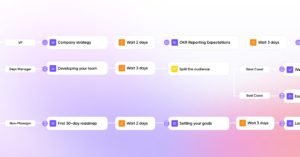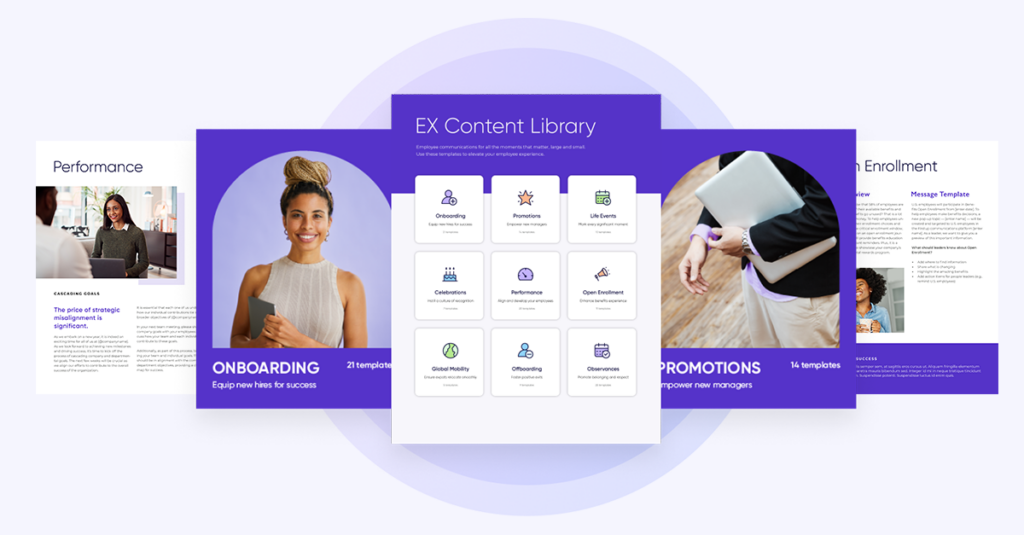People feel better and work better when they’re emotionally connected to their colleagues and the mission of their organization. While this has always been true, it’s been truly essential since the COVID-19 pandemic changed our lives – most dramatically in the healthcare industry.
As we know, healthcare workers were blindsided by the onslaught of critically ill patients and the immediate shifts in protocols that were required to keep people as safe as possible. As a result, many employees were left feeling overwhelmed, isolated, disengaged, and lonely. Even now, as daily life is starting to look somewhat “normal” again, the industry is still in a state of flux. Case in point: about 20% of healthcare workers have quit since the pandemic started, and up to 47% of them plan to leave their positions by 2025.
The lessons for healthcare (and all) industry leaders are clear:
- Do everything you can to understand what employees experience in a dispersed workforce. In short, get out of the office, talk to people on the front lines, and see what’s going on.
- Make sure everyone can easily access reliable information that will keep them plugged into each other and the strategic direction of the organization.
When we eliminate barriers to information and reinforce a nurturing organizational culture, employees feel connected to their purpose, team, and leaders – the right conditions to succeed and feel good about themselves and their work. It’s not surprising that 79% of people surveyed believe a sense of belonging is important to success.
Employees with a strong sense of belonging report a 56% higher overall job performance.
Conversely, when the safety and wellbeing of patients is paramount, the uninformed, disengaged, and burned-out employees directly affect patient outcomes. As a result, healthcare organizations lose countless dollars annually.
So how can healthcare leaders communicate effectively with employees, especially when so many are in different locations or working remotely, even when the pandemic is over? Read on to learn about the top 3 challenges healthcare organizations face, the costs associated, and solutions that will help guide a more informed, engaged, and motivated workforce.
Firstup allows us to make it happen
Top 3 communication challenges in healthcare
Challenge #1: Informing a dispersed workforce
It’s hard enough to communicate effectively with office workers, but the challenges are that much greater when employees are not only dispersed and moving from place to place to do their jobs but also dealing with the serious health issues of their patients. Healthcare providers often spend their shifts running from room to room, department to department, making it nearly impossible to reliably and quickly access information at a computer terminal.
While emails and intranets are typically used to communicate within an organization, not all healthcare employees have work email addresses, and intranet platforms are not easy to see on mobile devices. This makes it difficult for healthcare organizations to make sure relevant and timely content can be seen and absorbed on the go, no matter where they are.
Americans now check their phones 96 times a day – that’s once every 10 minutes.
One of the few certainties healthcare organizations can depend on, however, is that their people have and use mobile devices in their personal lives. But these organizations have not updated their technology and communication methods for general employee use – data that can then be measured, to assess content engagement, and repurposed for different groups of employees.
Continuing to rely on outdated technology puts healthcare organizations at high risk of generating misinformation among disengaged employees, which can lower employee productivity and motivation, potentially resulting in higher costs of service. Simply put, good, consistent communication is critical for optimizing the employee experience – employees who feel valued and empowered to provide the care their patients need.
Disengaged employees can cost companies between $450 and $550 billion dollars a year.
Gallup
Solution – Being in the loop
With a mobile-optimized platform – and access to Quick Links – frontline and dispersed employees can get the information they need and the necessary tools to thrive, no matter where they are. By providing employees with a personalized newsfeed, organizations empower their workforce to remain connected and motivated, while also reducing the anxiety of “being out of the loop.”
At the same time, the organization’s communicators must be able to connect with their workforce quickly and effectively as demands change. With targeted broadcasts through which notifications are automatically sent across all channels and devices, individuals are quickly alerted to important, up-to-the-minute information. And with requested acknowledgments in the system, communicators can be confident that the intended audiences are receiving essential messages. Detailed analytics can further confirm content reach and effectiveness, so in times of crisis or immediate challenges, the appropriate employees can be targeted.
Challenge #2: Keeping employees engaged
Informing a dispersed workforce is one key hurdle, creating a supportive and inclusive culture in which employees feel engaged is another. The consequences of doing nothing – remaining fixed in old communication methods – can generate employee disengagement and even loneliness.
It has been found that 61% of employees in the workplace are lonely.
Because they move from place to place in their work, healthcare employees are often left alone to cope with a range of intense emotions and experiences. While they may be surrounded by the latest patient care technology, they have few tools to support their engagement and wellbeing on the job, which can affect patient care and outcomes.
Employees who feel disengaged and unmotivated also inevitably become less productive and efficient – commonly known as burnout – which can raise the cost of healthcare.
Annual average cost of turnover for an RN costs a hospital $3.6 million to $6.5 million per year.
With a burnt-out workforce, organizations ultimately struggle with employee retention and need to redirect resources to new hires and training, money that could have been used elsewhere.
Ultimately, losing employees unexpectedly leaves healthcare organizations weakened and understaffed, which increases the workload for those who remain, thereby potentially impacting patient care and the organization’s reputation and success.
A Gallup study across 200 hospitals found that nurse engagement is the #1 predictor of mortality variation across hospitals.
Solution – Sharing their voices
In today’s healthcare environment, building up employee engagement means genuinely empowering and encouraging staff to share their voices. By enabling employees to comment, like, chat, and submit their own content in a favored online forum, for example, they, in turn, feel heard and valued by their team and leaders.
Team morale is also uplifted when members can celebrate and support one another through automated gamification and personalized messaging, which organically strengthens the foundation of a caring culture.
Organizations can also benefit from dynamic employee engagement that includes regular customized surveys and in-feed polls, which provide invaluable feedback, drive ongoing two-way communications and strengthen the bonds of trust. It’s all about fostering a community that values each individual in a connected culture.
Challenge #3: Building positive brand advocates
The public looks to healthcare organizations for optimal patient care, trustworthy information, and sound guidance. With COVID-19, the spotlight on the healthcare industry was extra bright, given the rampant misinformation and fear that spread across the world.
Living with the agony of the pandemic every day, healthcare providers were seen as highly-trusted individuals and a source of truth and insights. Given this respected position in our society, negative patient experiences have a sizable impact on the reputation of the healthcare organization, and industry, as a whole.
Engaged and motivated employees are, and should be, positive advocates for their organization, with the ability and desire to spread thought leadership and brand awareness to the public. Since COVID-19, in particular, healthcare leaders and providers have become among the most trusted sources of information, thereby becoming brand ambassadors. Disengaged employees, however, can have the opposite effect, limiting the organization’s credibility.
Solution – Spreading brand awareness on social media
By empowering employees to become brand advocates – to share company-approved news, photos, videos, thought leadership, and industry insights across all social channels – organizations can organically expand their reach.
Learn how the Providence health network achieved an 8x increase in caregiver engagement after unifying its multiple platforms into one centralized communications system.
The more that employees engage with and promote their organization, the more connected and passionate they feel about it – the ultimate testament to an effective employee experience that contributes to the organization’s overall success.
Conclusion
“The interconnectedness becomes clear…everything matters…belonging is biology, and disconnection destroys our health.”
~ Bruce Perry
Healthcare organizations thrive and function because of the tireless dedication of their nurses, doctors, and countless support staff, who show up on the frontlines every day. Only with their care and perseverance can patients and their families achieve the outcomes they hope for.
But while they’re dedicated to caring for patients, healthcare organizations often neglect to focus on the well-being of their own caregivers, which can leave them feeling isolated and disconnected. This phenomenon leads to employee burnout, low productivity, and low retention, which will affect patient outcomes and the cost of care.
Ultimately organizational success is based on an employee experience that reflects a caring and connected culture, one that creates a sense of belonging and value that each person brings to their work. And a strong communication and engagement strategy is at the heart of every successful employee experience.
By building an informed and engaged workforce, employees are empowered to thrive, and everyone benefits.
Our latest guide will show you how to engage your frontline workforce with the right information using the latest technology.
Download PDF








